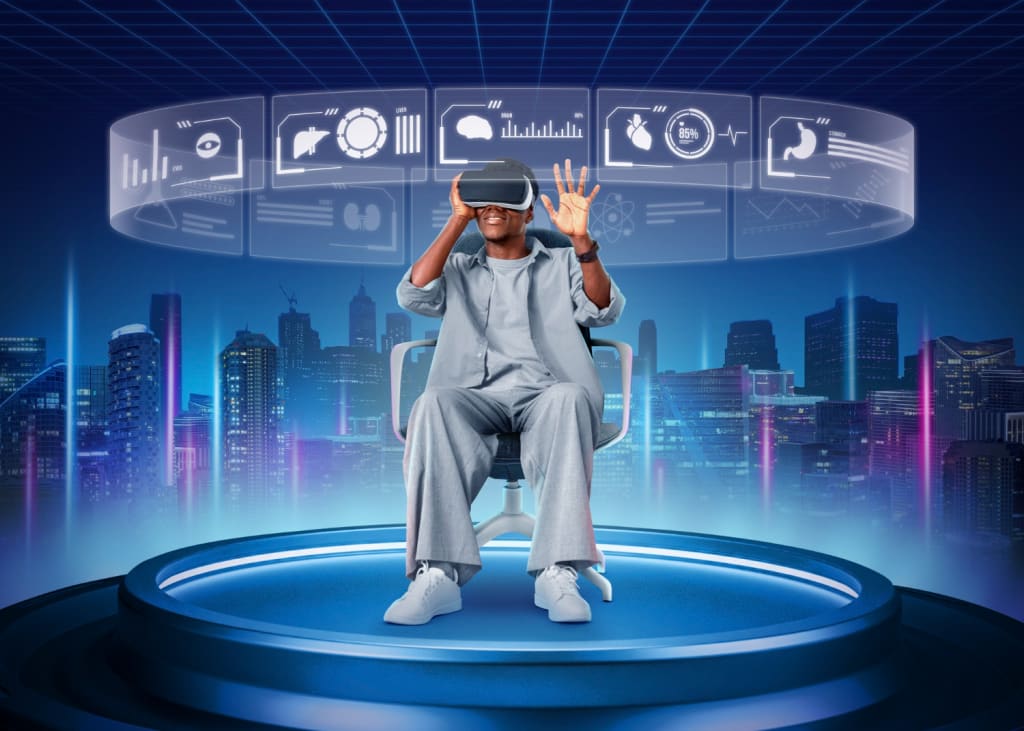Content warning
This story may contain sensitive material or discuss topics that some readers may find distressing. Reader discretion is advised. The views and opinions expressed in this story are those of the author and do not necessarily reflect the official policy or position of Vocal.
How To Implement AR in an E-commerce Website?
How To Implement AR in an E-commerce Website

Augmented Reality (AR) has not only become a sensation around the globe, but it has also become a prominent source and an opportunity for development in online buying experiences where Augmented Reality (AR) is the revolution. Consider this, customers getting to feel how a dress would fit them, the size of a new chair in the living room, or what a new gadget would fit in their working station without going through the physical process. Sounds impressive, right? That being said, let me explain how you can put AR technology to use in your e-commerce site to get more customers.
Introduction to AR in E-commerce
AR makes online shopping better for the buyer since it involves laying digital data on the physical reality. It is used in shopping scenarios whereby the user has an interface of the desired product in their physical surroundings, thereby enhancing the shopping experience.
Benefits of Using AR in Online Shopping
Increased Engagement: It also indicates that AR can help maintain customers’ attention and extend the time they spend on your site.
Enhanced Customer Experience: Customer decisions are usually made more effectively when a realistic picture of the products or the services being sought is given.
Reduced Return Rates: The need to ensure customer preference since customers are more likely to return items when they have an unclear perception on what they are buying.
Essential Tools and Technologies
To get started with AR, you'll need some essential tools and technologies:
AR Development Platforms: For iOS, ARKit is a good resource to use, while on Android, you can utilize ARCore.
3D Modeling Software: In Blender, SketchUp, or any other 3D modeling tool to design your actual products in virtual.
WebAR Solutions: This kind of solutions like 8th Wall or Vectary that enable the creation of AR experiences on the web leaving out the app altogether.
Steps to Implement AR in Your Website
Identify Your Needs: Specify the nature of products that can benefit from incorporation of AR technology.
Choose the Right Tools: Make a selection of the required and suitable AR development platform and 3D modeling software.
Create 3D Models: Create textured 3D models of your products. Make sure these models are credible and are ideal for web utility.
Integrate AR into Your Website: Implement WebAR solutions that provide integrated, on-site AR interactive experience.
Test Thoroughly: Make certain your AR features are compatible with various devices and multiple browser types.
AR in Retail: Case Studies
IKEA Place: IKEA utilizes AR in a way that enables the customers to get the feel of the furniture in their own houses without having to buy the furniture aspect, not to mention the improvement in the shopping experience.
Sephora Virtual Artist: Similar to Sephora’s AR tool, which allows their customers to try on, or rather paint, makeup products prior to purchase.
Best Practices for AR Integration
User-Friendly Interface: Try to keep the uses of AR features simple and quick to find for the user.
Quality 3D Models: Make a point to use accurate and quality 3D models for a more authentic look and feel of the content.
Cross-Platform Compatibility: Make sure that your augmented reality applications respond to devices developed on both iOS and Android.
Load Time Optimization: Performance should be as smooth and fast as possible for improved presentation of AR content to the audience.
Overcoming Common Challenges
Technical Issues: Proper development of AR systems can be intricate, and this means it is important to collaborate with skilled developers.
Cost: It is an arduous task to develop AR and at any given time, the process may be costly. implementation should be done in the form of a pilot project in order to determine its strength and weaknesses before the full roll out.
User Adoption: Make sure your customers know how to properly leverage features of AR due to which they are being implemented.
Future of AR in E-commerce
Future seems to be bright for AR in e-commerce. Technology continues to continue to evolve, and so will AR – this form of innovation will become even more widespread or even more seamlessly embedded into the online shopping process. It’s all about younger shoppers that researchers believe will lead to more fascinating and fancy shops where visual elements of a store are created both online and offline.
Does AR Impact SEO?
Yes, AR can affect SEO. AR can further lead to more engagement of the users as they spend less time on the site and this reduces bounce rates while at the same enhancing the usability of the site, a factor that works well with SE’s. Sorting of AR content pertinent to appropriate keywords and meta tags also aids in rising the ranking on search engines.
Conclusion
Thus, we have seen that incorporating AR could to a large extent improve the customers’ experience and engagement and also impact the e-commerce site’s sales. Adopting the step by step approach and adhering to the guidelines outlined above you can integrate AR and get a head start over the competition.
FAQs
1. What is augmented reality in e-commerce?
Augmented reality in e-commerce involves putting another layer on top of reality that is visible to the customer and allows them to engage with the virtual items in one's environment.
2. How does AR benefit online shopping?
AR is beneficial as it makes customers spend more time on a website, make shopping more enjoyable and minimize chances of returning goods due to the fact that the customer can see what the goods would look like in reality.
3. What tools are needed to implement AR on a website?
AR application development requires AR enabling platforms like ARKit or ARCore, 3D modeling tools, or WebAR Solutions.
4. Can AR improve SEO?
Yes, AR integrated into the site can help boost SEO because it provides users with more points of interest and fewer chances to leave the site at the same time helping users get a better experience.
5. Are there any challenges in implementing AR?
Some of the difficulties are technical in nature, then there is the problem of high cost, and low usage by users. One must also not completely discourage using new tools for application development; for these problems, it is recommended to work with experienced developers as well as educate the customers.
About the Creator
Enjoyed the story? Support the Creator.
Subscribe for free to receive all their stories in your feed. You could also pledge your support or give them a one-off tip, letting them know you appreciate their work.





Comments
There are no comments for this story
Be the first to respond and start the conversation.